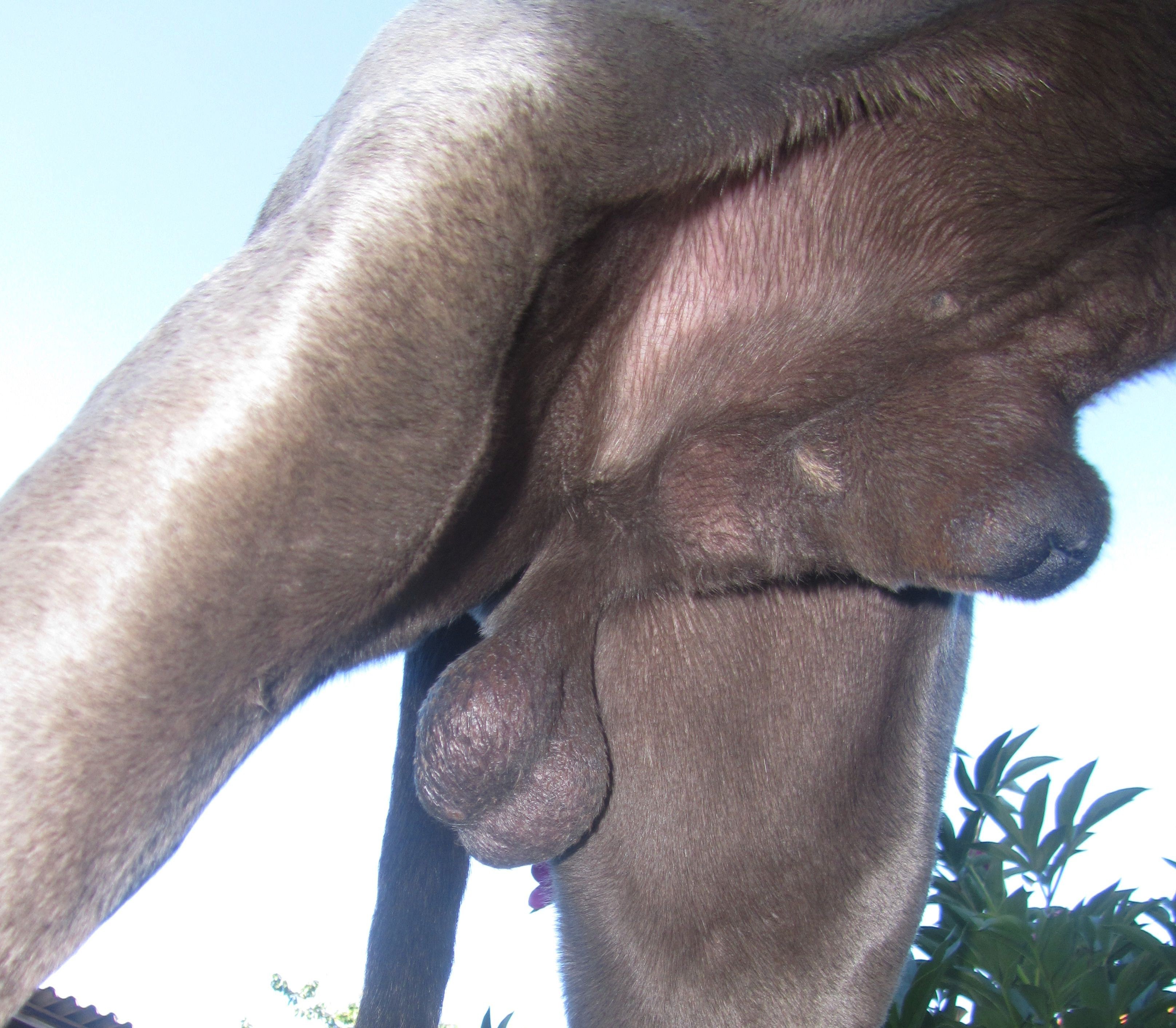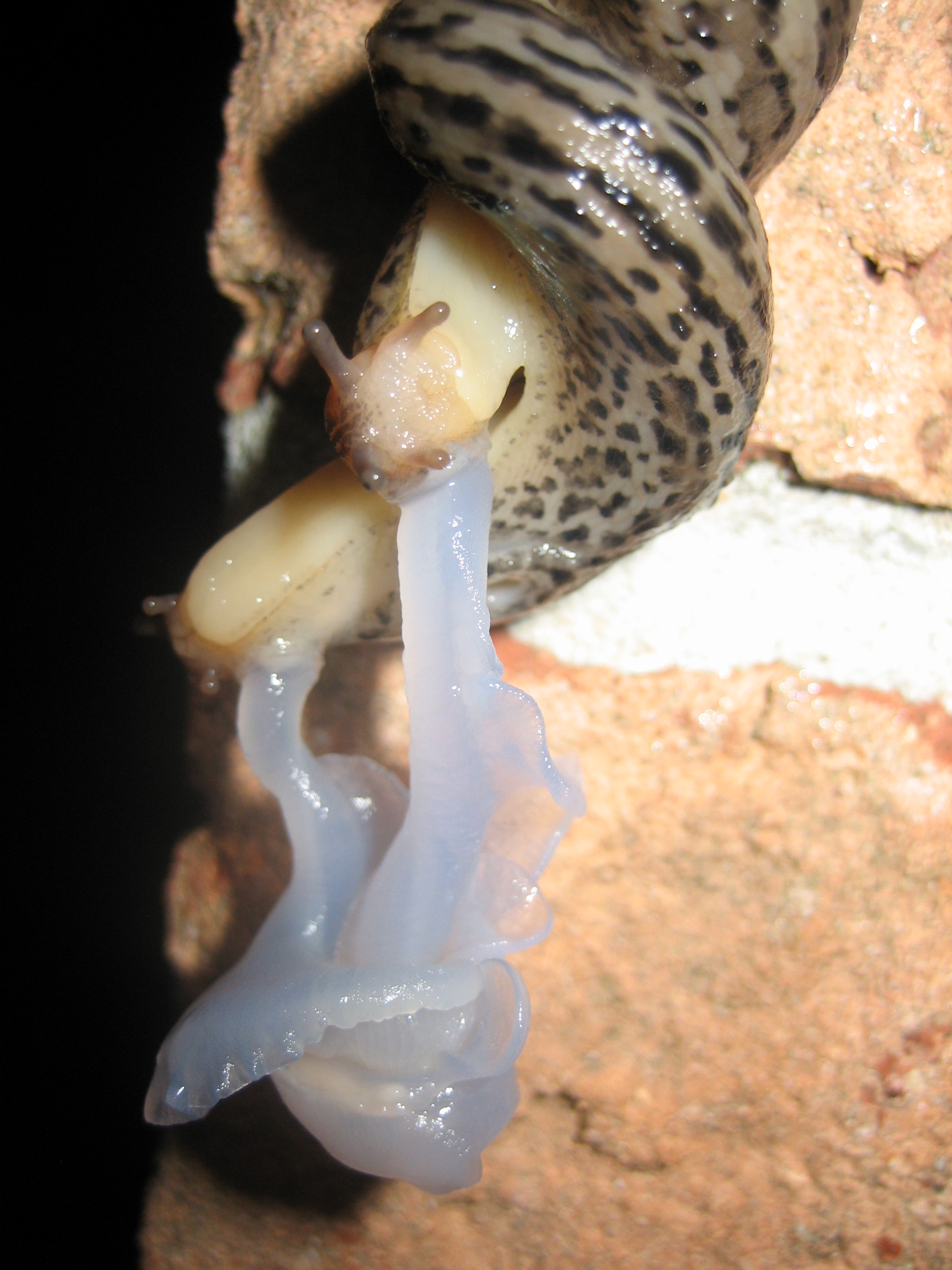|
Oospira Smithi
''Atractophaedusa smithi'' is a species of air-breathing land snail, a terrestrial molluscs, terrestrial gastropod mollusk in the family Clausiliidae, the door snails. This land snail lives in limestone areas in Vietnam. The original description was published in 2007, and included details of the reproductive system and the radula. The shell is sinistral in coiling and has 8 or 9 Whorl (mollusc), whorls. The specific name ''smithi'' is in honor of Mr. Jady Smith, the project manager of the field research that resulted in the discovery of this species. Distribution This species occurs in: * List of non-marine molluscs of Vietnam, Vietnam The type locality is Cát Bà Island, near the entrance of the Trung Trang Cave, 6.iv.2001, 20°47.38'N 106°59.87'E, Haiphong Province, Vietnam. All other known localities are also on Cát Bà Island. Description The gastropod shell, shell is sinistral, not decollate, rather large, fusiform, solid, dark-brown, not translucent. Apical whor ... [...More Info...] [...Related Items...] OR: [Wikipedia] [Google] [Baidu] |
Zoologische Mededelingen
''Zoologische Mededelingen'' was a peer-reviewed open access scientific journal publishing papers and monographs on animal systematics. The publisher was the National Museum of Natural History Naturalis in the Netherlands. The first issue appeared in 1915, as the official journal of Naturalis' predecessor, the Rijks Museum van Natuurlijke Historie. Earlier, the museum published ''Muséum d'Histoire Naturelle des Pays-Bas'' (volumes I-XIV, 1862-1908) and ''Notes from the Leyden Museum'' (volumes I-XXXVI, 1879-1914), which mainly covered the fauna of the Netherlands and the former Dutch colonies. ''Zoologische Mededelingen'' was indexed in ''The Zoological Record'' and ''BIOSIS''. A complete backlist of published volumes is presented on the institutional repository of Naturalis. The last article was published in 2014 and the journal was merged into the ''European Journal of Taxonomy The ''European Journal of Taxonomy'' is a peer-reviewed open access scientific journal for descrip ... [...More Info...] [...Related Items...] OR: [Wikipedia] [Google] [Baidu] |
Suture (gastropod)
In anatomy, a suture is a fairly rigid joint between two or more hard elements of an organism, with or without significant overlap of the elements. Sutures are found in the skeletons or exoskeletons of a wide range of animals, in both invertebrates and vertebrates. Sutures are found in animals with hard parts from the Cambrian period to the present day. Sutures were and are formed by several different methods, and they exist between hard parts that are made from several different materials. Vertebrate skeletons The skeletons of vertebrate animals (fish, amphibians, reptiles, birds, and mammals) are made of bone, in which the main rigid ingredient is calcium phosphate. Cranial sutures The skulls of most vertebrates consist of sets of bony plates held together by cranial sutures. These sutures are held together mainly by Sharpey's fibers which grow from each bone into the adjoining one. Sutures in the ankles of land vertebrates In the type of crurotarsal ankle which is found i ... [...More Info...] [...Related Items...] OR: [Wikipedia] [Google] [Baidu] |
Oospira Smithi Reproductive System 2
''Oospira'' is a genus of terrestrial gastropods belonging to the subfamily Phaedusinae of the family Clausiliidae. MolluscaBase eds. (2021). MolluscaBase. Oospira W. T. Blanford, 1872. Accessed through: World Register of Marine Species at: http://www.marinespecies.org/aphia.php?p=taxdetails&id=886716 on 2021-11-10 The species of this genus are found in Asia. Species *'' Oospira abstrusa'' *'' Oospira acehensis'' *'' Oospira aciculata'' *'' Oospira alticola'' *'' Oospira arakana'' *'' Oospira asaluensis'' *'' Oospira asiphonia'' Nordsieck, Hartmut, 2007, New taxa of Phaedusinae and Garnieriinae from southern China (Gastropoda: Stylommatophora: Clausiliidae), Archiv für Molluskenkunde 136, No. 2, pp. 217-243 *'' Oospira baziniana'' *'' Oospira bensoni'' *'' Oospira binaria'' *'' Oospira blanfordi'' *'' Oospira bolovenica'' *'' Oospira bouddah'' *'' Oospira brachyptychia'' *''Oospira brevior'' *'' Oospira bulbus'' *'' Oospira butoti'' *'' Oospira coffea'' *' ... [...More Info...] [...Related Items...] OR: [Wikipedia] [Google] [Baidu] |
Oospira Smithi Reproductive System
''Oospira'' is a genus of terrestrial gastropods belonging to the subfamily Phaedusinae of the family Clausiliidae. MolluscaBase eds. (2021). MolluscaBase. Oospira W. T. Blanford, 1872. Accessed through: World Register of Marine Species at: http://www.marinespecies.org/aphia.php?p=taxdetails&id=886716 on 2021-11-10 The species of this genus are found in Asia. Species *'' Oospira abstrusa'' *'' Oospira acehensis'' *'' Oospira aciculata'' *'' Oospira alticola'' *'' Oospira arakana'' *'' Oospira asaluensis'' *'' Oospira asiphonia'' Nordsieck, Hartmut, 2007, New taxa of Phaedusinae and Garnieriinae from southern China (Gastropoda: Stylommatophora: Clausiliidae), Archiv für Molluskenkunde 136, No. 2, pp. 217-243 *'' Oospira baziniana'' *'' Oospira bensoni'' *'' Oospira binaria'' *'' Oospira blanfordi'' *'' Oospira bolovenica'' *'' Oospira bouddah'' *'' Oospira brachyptychia'' *''Oospira brevior'' *'' Oospira bulbus'' *'' Oospira butoti'' *'' Oospira coffea'' *' ... [...More Info...] [...Related Items...] OR: [Wikipedia] [Google] [Baidu] |
Penile Sheath
Almost all mammal penises have foreskins or prepuce, although in non-human cases the foreskin is usually a sheath (sometimes called the ''preputial sheath'', ''praeputium'' or ''penile sheath'') into which the whole penis is retracted. In koalas, the foreskin contains naturally occurring bacteria that play an important role in fertilization. In some bat species, the prepuce contains an erectile tissue structure called the ''accessory corpus cavernosus''. During musth, a male elephant may urinate with the penis still in the sheath, which causes the urine to spray on the hind legs.Sukumar, pp. 100–08. Male dogs have a conspicuous penis sheath. In stallions, the retractor penis muscle contracts to retract the stallion's penis into the sheath and relaxes to allow the penis to extend from the sheath. The penis sheath of a male axis deer is elongated and urine-stained. When rubbing trees with their horns, these stags sometimes move the penis back and forth rapidly inside its she ... [...More Info...] [...Related Items...] OR: [Wikipedia] [Google] [Baidu] |
Reproductive System Of Gastropods
The reproductive system of gastropods (slugs and snails) varies greatly from one group to another within this very large and diverse taxonomic class of animals. Their reproductive strategies also vary greatly, see Mating of gastropods. In many marine gastropods there are separate sexes (male and female); most terrestrial gastropods however are hermaphrodites. Courtship is a part of the behaviour of mating gastropods. In some families of pulmonate land snails, one unusual feature of the reproductive system and reproductive behavior is the creation and utilization of love darts, the throwing of which has been identified as a form of sexual selection. Gastropods are defined as snails and slugs, belonging to a larger group called Molluscs. Gastropods have unique reproductive systems, varying significantly from one taxonomic group to another. They can be separated into three categories: marine, freshwater, and land. Reproducing in marine or freshwater environments makes getting s ... [...More Info...] [...Related Items...] OR: [Wikipedia] [Google] [Baidu] |
Atractophaedusa Rhopaloides
''Atractophaedusa'' is a genus of gastropods belonging to the family Clausiliidae. The species of this genus are found in South-eastern Asia. Species The following species are recognised in the genus ''Atractophaedusa'': *'' Atractophaedusa antibouddah'' *'' Atractophaedusa kebavica'' *'' Atractophaedusa ookuboi'' *'' Atractophaedusa pyknosoma'' *'' Atractophaedusa rhopaloides'' *'' Atractophaedusa smithi'' *'' Atractophaedusa takagii'' References Clausiliidae {{Clausiliidae-stub ... [...More Info...] [...Related Items...] OR: [Wikipedia] [Google] [Baidu] |
Atractophaedusa Pyknosoma
''Atractophaedusa'' is a genus of gastropods belonging to the family Clausiliidae. The species of this genus are found in South-eastern Asia. Species The following species are recognised in the genus ''Atractophaedusa'': *'' Atractophaedusa antibouddah'' *'' Atractophaedusa kebavica'' *'' Atractophaedusa ookuboi'' *'' Atractophaedusa pyknosoma'' *''Atractophaedusa rhopaloides ''Atractophaedusa'' is a genus of gastropods belonging to the family Clausiliidae. The species of this genus are found in South-eastern Asia. Species The following species are recognised in the genus ''Atractophaedusa'': *'' Atractophaedusa a ...'' *'' Atractophaedusa smithi'' *'' Atractophaedusa takagii'' References Clausiliidae {{Clausiliidae-stub ... [...More Info...] [...Related Items...] OR: [Wikipedia] [Google] [Baidu] |
Atractophaedusa Kebavica
''Atractophaedusa'' is a genus of gastropods belonging to the family Clausiliidae. The species of this genus are found in South-eastern Asia. Species The following species are recognised in the genus ''Atractophaedusa'': *'' Atractophaedusa antibouddah'' *'' Atractophaedusa kebavica'' *'' Atractophaedusa ookuboi'' *''Atractophaedusa pyknosoma'' *''Atractophaedusa rhopaloides ''Atractophaedusa'' is a genus of gastropods belonging to the family Clausiliidae. The species of this genus are found in South-eastern Asia. Species The following species are recognised in the genus ''Atractophaedusa'': *'' Atractophaedusa a ...'' *'' Atractophaedusa smithi'' *'' Atractophaedusa takagii'' References Clausiliidae {{Clausiliidae-stub ... [...More Info...] [...Related Items...] OR: [Wikipedia] [Google] [Baidu] |
Atractophaedusa Antibouddah
''Atractophaedusa'' is a genus of gastropods belonging to the family Clausiliidae. The species of this genus are found in South-eastern Asia. Species The following species are recognised in the genus ''Atractophaedusa'': *'' Atractophaedusa antibouddah'' *''Atractophaedusa kebavica'' *'' Atractophaedusa ookuboi'' *''Atractophaedusa pyknosoma'' *''Atractophaedusa rhopaloides ''Atractophaedusa'' is a genus of gastropods belonging to the family Clausiliidae. The species of this genus are found in South-eastern Asia. Species The following species are recognised in the genus ''Atractophaedusa'': *'' Atractophaedusa a ...'' *'' Atractophaedusa smithi'' *'' Atractophaedusa takagii'' References Clausiliidae {{Clausiliidae-stub ... [...More Info...] [...Related Items...] OR: [Wikipedia] [Google] [Baidu] |
Atractophaedusa
''Atractophaedusa'' is a genus of gastropods belonging to the family Clausiliidae. The species of this genus are found in South-eastern Asia. Species The following species are recognised in the genus ''Atractophaedusa'': *''Atractophaedusa antibouddah'' *''Atractophaedusa kebavica'' *'' Atractophaedusa ookuboi'' *''Atractophaedusa pyknosoma'' *''Atractophaedusa rhopaloides ''Atractophaedusa'' is a genus of gastropods belonging to the family Clausiliidae. The species of this genus are found in South-eastern Asia. Species The following species are recognised in the genus ''Atractophaedusa'': *'' Atractophaedusa a ...'' *'' Atractophaedusa smithi'' *'' Atractophaedusa takagii'' References Clausiliidae {{Clausiliidae-stub ... [...More Info...] [...Related Items...] OR: [Wikipedia] [Google] [Baidu] |
Clausilium
The clausilium is a calcareous anatomical structure which is found in one group of air-breathing land snails: terrestrial pulmonate gastropod mollusks in the family Clausiliidae, the door snails. The clausilium is one part of the clausilial apparatus. The presence of a clausilium is the reason for the common name "door snails", because all the snails in this family have a roughly spoon-shaped "door" or clausilium, which can slide down to close the aperture of the shell. However, this structure is emphatically not the same thing as an operculum, which is virtually non-existent in pulmonate snails, only occurring in the Amphibolidae. The exact shape of the clausilium varies from genus to genus: it can be tongue-shaped, spoon-shaped or spatula-shaped. The wide flat end of the clausilium can close the aperture of the snail shell, and thus protect the soft parts against predation by animals such as carnivorous beetle larvae. The narrow end of the clausilium slides in a groove, which is ... [...More Info...] [...Related Items...] OR: [Wikipedia] [Google] [Baidu] |



